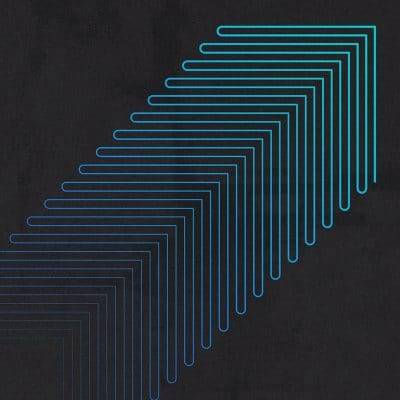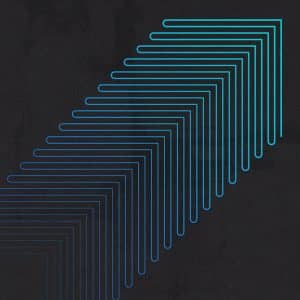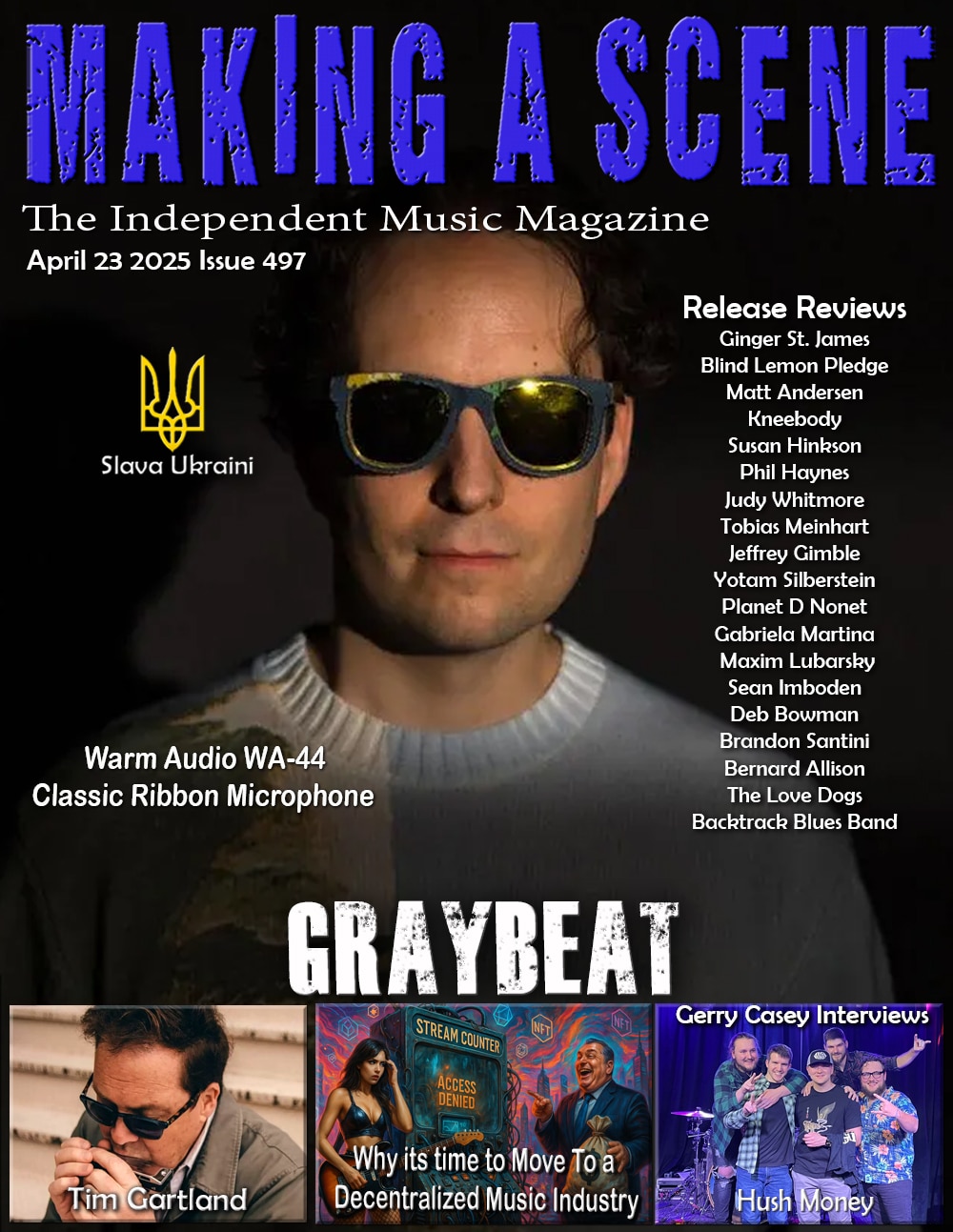Brandon Ross Phantom Station Off the End
 Brandon Ross Phantom Station
Off the End
Sunnyside
Admittedly, it was difficult to grasp this one on first listen. This challenging music demands concentration. Yet, having caught a part of Brandon Ross’s Phantom Station at Big Ears last month, the concept became more intriguing. Watching the group blend their instruments with electronics with a clear concept of interplay was revealing. During that same week at Big Ears this writer had the fortune of seeing Ross perform with two of Henry Threadgill’s groups (sans Threadgill) – Very Very Circus and Make a Move. With the latter, Ross’s genuine rapport and graciousness with the audience struck a chord (as did the music), giving a new perspective when returning to listen to Off the End. As the title and even the band name implies, this music is clearly ‘out there,’ in its abstract and intriguing glory. One needs to be patient and let the whole performance unfold. Listening to snippets doesn’t do it justice at all, especially since there are portions that build dramatically, later recede, and reappear in even more interesting forms. This performance takes place at avant garde haven Firehouse 12 in New Haven, CT without any written music or explicit instructions and features guitarist/vocalist Brandon Ross, cornetist Graham Haynes, keyboardist David Virelles, and drummer JT Lewis, with a huge assist on Sound design from Hardedge, the same unit that played at Big Ears.
This statement from Ross in the liners may not be very descriptive about the music but it’s a cool summary of the concept – “Phantom Station is a sound crucible. A space where music is (revealed) and communication unfolds within an ‘individual-directed’ ensemble; a genre-free engagement with power of independence and the beauty of diversity within a select community of agile creators: music crafted and deployed in the opportunities of the present moment. That, is Phantom Station.” At its heart the group is a collaboration between Ross and Hardedge who expands the sonics with his textural skills without overextending the size of the ensemble. The players in this version all have deep relationships with Ross. Haynes and Ross have known each other since the early ‘80s and have recorded duet material when the cornetist lived in Paris in the ‘90s. Lewis and Ross play together often, notably in the avant power trio Harriett Tubman, and Ross and Virelles met through their mutual affiliation with Threadgill in 2014.
The CD will list eleven tracks but in fact, these are just ‘indexes’ of one continual 65-minute performance. Stay locked in. In fact, you may just want to stop reading here and take your own listening journey. But, for those who just crave some description, we offer the following.
At first you may want to check your player as the music begins ever so gently with low drums and chirping, echoing electronics in “May Forever Pass Between.” Ross and Haynes build the sonics with warm, sustained tones on “Through the Heart of My Demarcation” and Virelles’ piano and keyboards embellish it further. Ross’s reverberating vocals float about the dense backdrop of synth, guitar, and cornet-enhanced electronics on “The Gate Is Open” but dissonance ensues with a blurring mix of keys, looped sound, and percussive flourishes on “Your Shoes Point Like Arrows,” one of the more intense sequences as the cornet and guitar join the fray. There is a point of recession here, as previously alluded to as Virelles’ undulating piano holds sway over twittering, static-like percussion, and electronics in “Unsharpened Angles Of,” leading to even calmer waters in “I Can See All of This” with Ross’s soprano guitar and Haynes’ cornet as the lead vessels. “How Will I Ornament Your Mouth” is a shorter segment with Haynes’ cornet alternating staccato and sustained mournful tones over the bed of syncopated guitar, piano, and gong-like percussion.
Lewis’s hand drumming and Ross’s Golpe (percussion-on-guitar-body) build a steady groove on “Sometimes I Stand Behind You” as Haynes, Virelles, and Ross add series of short, chirping bursts over Hardedge’s swirling undercurrent. Ross’s soprano guitar interrupts that passage on the brief “Immaculate Toes” before another long segment, “Leave It on the Ground” develops around oddly sequenced percussion, refracted piano counterpoint and a collective jungle-like call-and-response between electric guitar, electrified cornet, and drums with Virelles hitting chiming notes in support.
To conclude, the ensemble makes way for a vintage Ross composition that revisits those Haynes-Ross duets, a warm and peaceful cap to an otherwise dizzying hour of music. The audience, who have remained quiet throughout, possibly awe-struck, bursts into well-deserved, enthusiastic applause. Your listening requires similar patience. If you don’t feel rewarded the first time, try again. You’ll get there.
Brandon Ross Phantom Station
Off the End
Sunnyside
Admittedly, it was difficult to grasp this one on first listen. This challenging music demands concentration. Yet, having caught a part of Brandon Ross’s Phantom Station at Big Ears last month, the concept became more intriguing. Watching the group blend their instruments with electronics with a clear concept of interplay was revealing. During that same week at Big Ears this writer had the fortune of seeing Ross perform with two of Henry Threadgill’s groups (sans Threadgill) – Very Very Circus and Make a Move. With the latter, Ross’s genuine rapport and graciousness with the audience struck a chord (as did the music), giving a new perspective when returning to listen to Off the End. As the title and even the band name implies, this music is clearly ‘out there,’ in its abstract and intriguing glory. One needs to be patient and let the whole performance unfold. Listening to snippets doesn’t do it justice at all, especially since there are portions that build dramatically, later recede, and reappear in even more interesting forms. This performance takes place at avant garde haven Firehouse 12 in New Haven, CT without any written music or explicit instructions and features guitarist/vocalist Brandon Ross, cornetist Graham Haynes, keyboardist David Virelles, and drummer JT Lewis, with a huge assist on Sound design from Hardedge, the same unit that played at Big Ears.
This statement from Ross in the liners may not be very descriptive about the music but it’s a cool summary of the concept – “Phantom Station is a sound crucible. A space where music is (revealed) and communication unfolds within an ‘individual-directed’ ensemble; a genre-free engagement with power of independence and the beauty of diversity within a select community of agile creators: music crafted and deployed in the opportunities of the present moment. That, is Phantom Station.” At its heart the group is a collaboration between Ross and Hardedge who expands the sonics with his textural skills without overextending the size of the ensemble. The players in this version all have deep relationships with Ross. Haynes and Ross have known each other since the early ‘80s and have recorded duet material when the cornetist lived in Paris in the ‘90s. Lewis and Ross play together often, notably in the avant power trio Harriett Tubman, and Ross and Virelles met through their mutual affiliation with Threadgill in 2014.
The CD will list eleven tracks but in fact, these are just ‘indexes’ of one continual 65-minute performance. Stay locked in. In fact, you may just want to stop reading here and take your own listening journey. But, for those who just crave some description, we offer the following.
At first you may want to check your player as the music begins ever so gently with low drums and chirping, echoing electronics in “May Forever Pass Between.” Ross and Haynes build the sonics with warm, sustained tones on “Through the Heart of My Demarcation” and Virelles’ piano and keyboards embellish it further. Ross’s reverberating vocals float about the dense backdrop of synth, guitar, and cornet-enhanced electronics on “The Gate Is Open” but dissonance ensues with a blurring mix of keys, looped sound, and percussive flourishes on “Your Shoes Point Like Arrows,” one of the more intense sequences as the cornet and guitar join the fray. There is a point of recession here, as previously alluded to as Virelles’ undulating piano holds sway over twittering, static-like percussion, and electronics in “Unsharpened Angles Of,” leading to even calmer waters in “I Can See All of This” with Ross’s soprano guitar and Haynes’ cornet as the lead vessels. “How Will I Ornament Your Mouth” is a shorter segment with Haynes’ cornet alternating staccato and sustained mournful tones over the bed of syncopated guitar, piano, and gong-like percussion.
Lewis’s hand drumming and Ross’s Golpe (percussion-on-guitar-body) build a steady groove on “Sometimes I Stand Behind You” as Haynes, Virelles, and Ross add series of short, chirping bursts over Hardedge’s swirling undercurrent. Ross’s soprano guitar interrupts that passage on the brief “Immaculate Toes” before another long segment, “Leave It on the Ground” develops around oddly sequenced percussion, refracted piano counterpoint and a collective jungle-like call-and-response between electric guitar, electrified cornet, and drums with Virelles hitting chiming notes in support.
To conclude, the ensemble makes way for a vintage Ross composition that revisits those Haynes-Ross duets, a warm and peaceful cap to an otherwise dizzying hour of music. The audience, who have remained quiet throughout, possibly awe-struck, bursts into well-deserved, enthusiastic applause. Your listening requires similar patience. If you don’t feel rewarded the first time, try again. You’ll get there.
- Jim Hynes
Buy Now

Discover more from Making A Scene!
Subscribe to get the latest posts sent to your email.














































